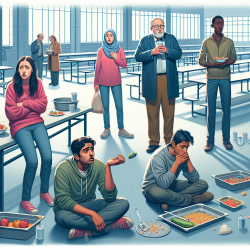In today's digital age, where smartphones and digital cameras are ubiquitous, the role of photographs in research is gaining renewed attention. The research article "The Visual Vernacular: Embracing Photographs in Research" explores how visual data can revolutionize qualitative research, particularly in health professions education (HPE). This blog post delves into the key findings of this study and offers insights on how practitioners can leverage these methodologies to enhance their research practices.
The Role of Photographs as Qualitative Data
The use of photographs in research is not new; however, their application as a primary data source is underutilized in many fields. Photographs serve as a silent voice, capturing complexities that may be overlooked by text or oral language. They offer a unique way to document and analyze social constructs, cultural norms, and participant experiences.
Photo-Documentation and Existing Images
Photo-documentation involves using photographs as objective records to capture clinical findings or social phenomena. This approach differs from traditional textual analysis by providing visual evidence that can be more impactful. Similarly, analyzing existing images—such as those found on medical school websites—can reveal underlying messages and societal norms.
Photo-Elicitation: Engaging Participants
Photo-elicitation involves using photographs to prompt discussion during interviews. This method empowers participants by allowing them to choose images that are meaningful to them. It fosters deeper engagement and reflection, offering insights that might not emerge through verbal questioning alone.
Photovoice: A Participatory Approach
Photovoice is a participatory research method where community members capture images that represent their experiences. This approach not only provides rich qualitative data but also promotes social change by giving voice to underrepresented groups.
Ethical Considerations and Challenges
The use of photographs in research raises ethical questions around informed consent, confidentiality, and power dynamics. Researchers must navigate these challenges carefully to ensure the dignity and rights of participants are upheld. Providing clear instructions and obtaining consent for image use are crucial steps in this process.
The Future of Visual Methodologies in Research
The integration of photographs into qualitative research offers vast potential for new insights and understanding. By embracing visual methodologies like photo-elicitation and photovoice, researchers can access data that might otherwise remain hidden. This approach not only enriches the research process but also empowers participants by giving them a more active role.
If you're a practitioner looking to enhance your research skills or explore new methodologies, consider incorporating photographs into your practice. The possibilities are endless, and the impact on your findings could be profound.










